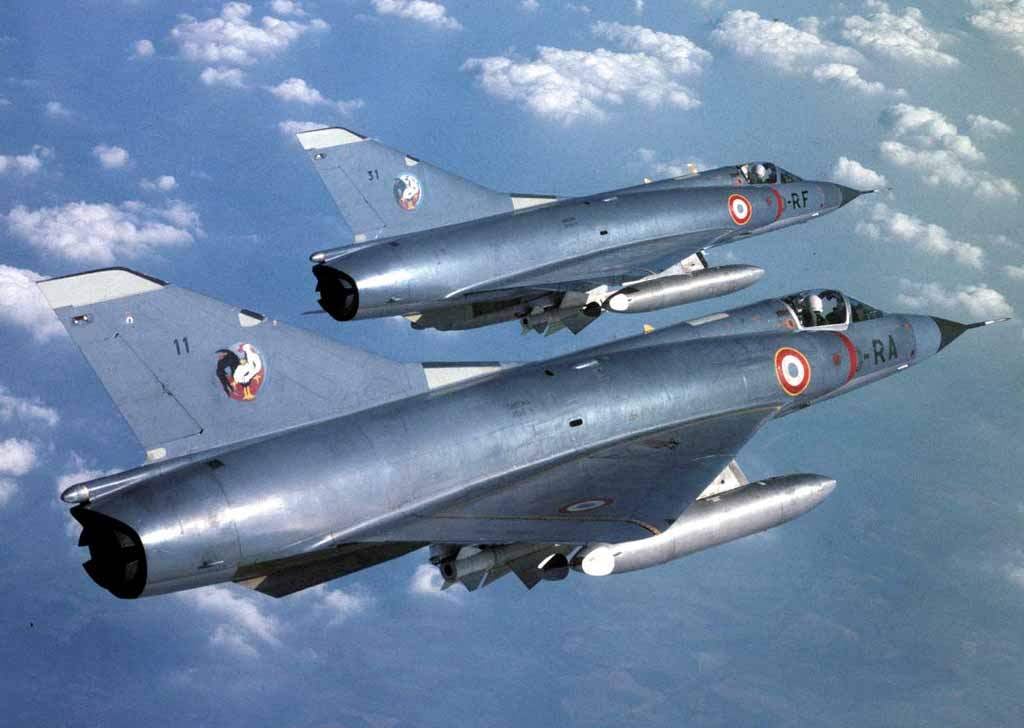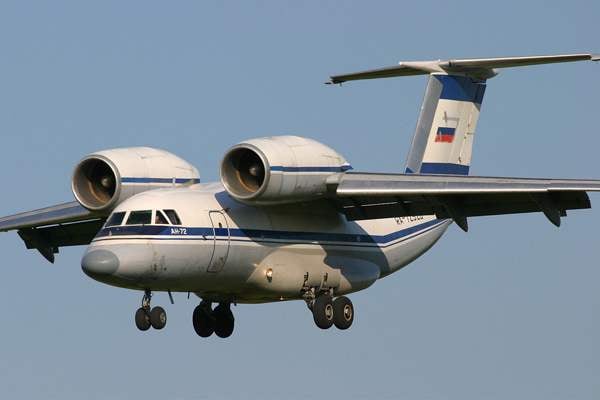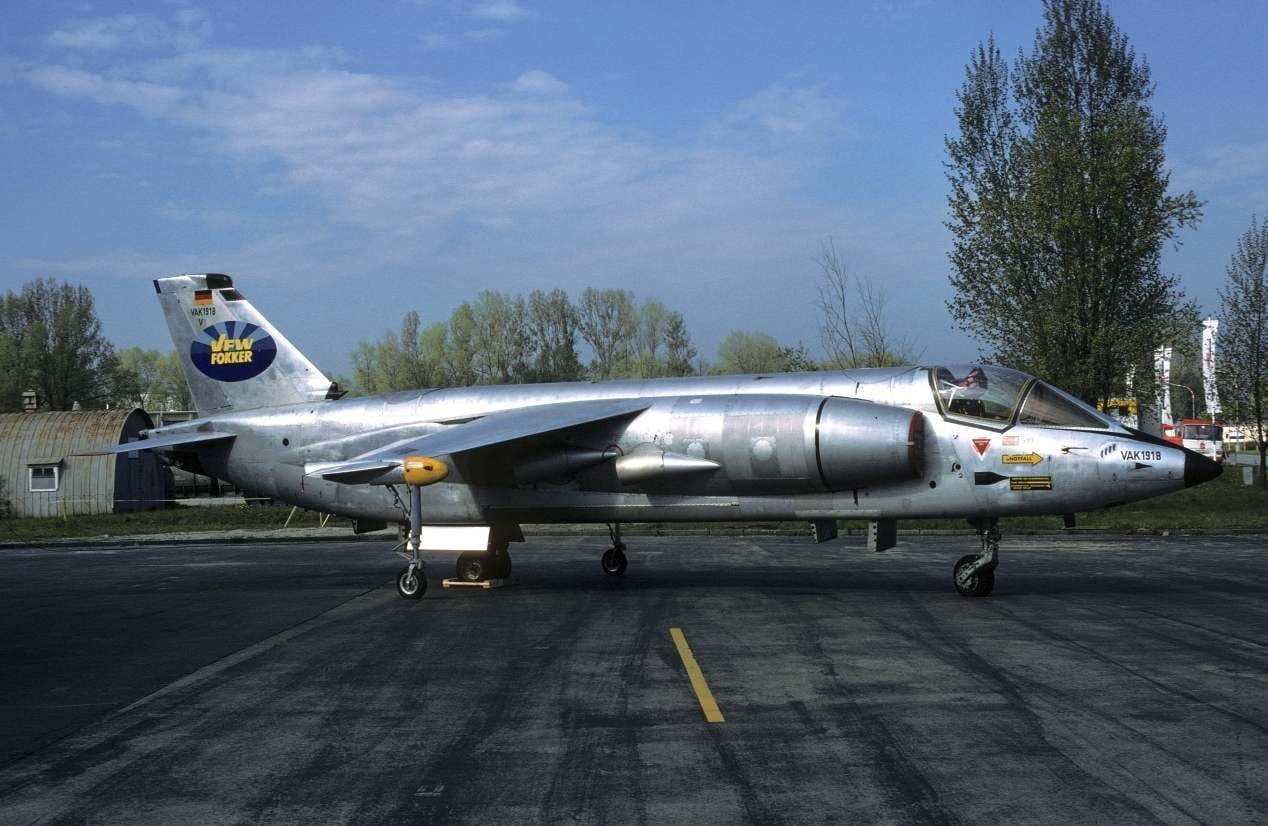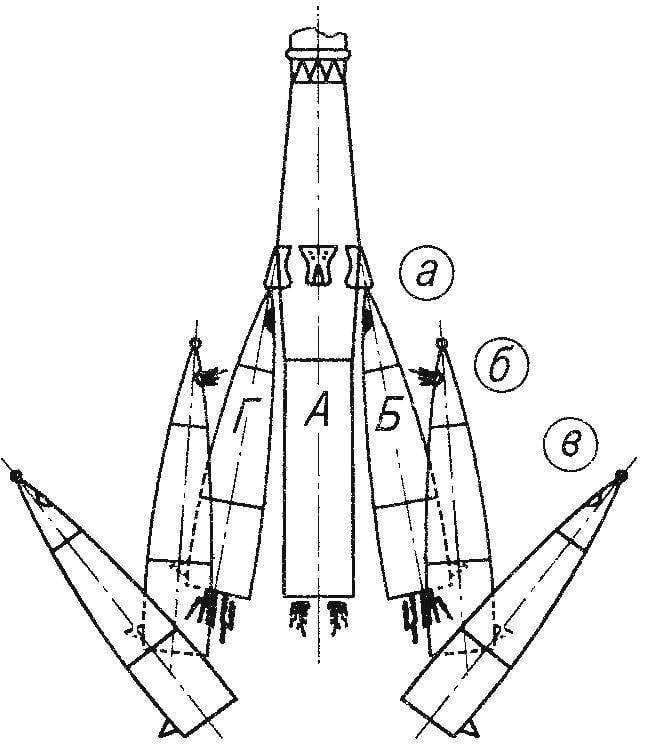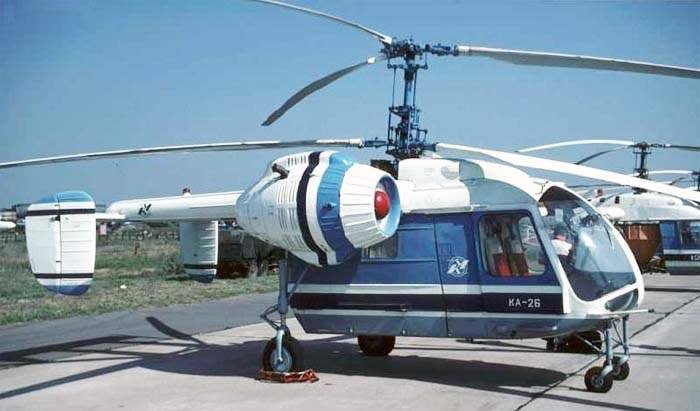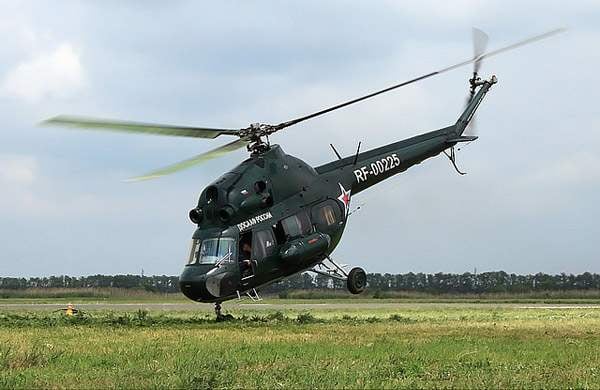 Fighter-interceptor, the Mirage IIIC. In 1953, the French air force announced a competition to create a light supersonic fighter-interceptor. Virtually all aircraft manufacturers and enterprises of France took part in it. Southeast Association – Societe Nationale de Constructions Aeronautiques du Sud-Est (SNCASE) built fighter-a tailless “durandal” with a triangular wing. The power plant consisted of a turbojet Atar 101F with a thrust of 3,400 lbs and a SEPR rocket engine with a thrust of 825 kg. southwest – Societe Nationale de Constructions Aeronautiques du Sud-Ouest (SNCASO), has proposed an unusual Orthoptera car SO.9000 “Trident”, with two turbojet engines of Turbomeca “Marbore” II with a thrust of 400 kg each and three-chambered SEPR rocket engine with a thrust of 3750 kg.
Fighter-interceptor, the Mirage IIIC. In 1953, the French air force announced a competition to create a light supersonic fighter-interceptor. Virtually all aircraft manufacturers and enterprises of France took part in it. Southeast Association – Societe Nationale de Constructions Aeronautiques du Sud-Est (SNCASE) built fighter-a tailless “durandal” with a triangular wing. The power plant consisted of a turbojet Atar 101F with a thrust of 3,400 lbs and a SEPR rocket engine with a thrust of 825 kg. southwest – Societe Nationale de Constructions Aeronautiques du Sud-Ouest (SNCASO), has proposed an unusual Orthoptera car SO.9000 “Trident”, with two turbojet engines of Turbomeca “Marbore” II with a thrust of 400 kg each and three-chambered SEPR rocket engine with a thrust of 3750 kg.
Aviation
An-72
 The aircraft short takeoff and landing An-72 was created to solve special military problems. To increase the lift coefficient of the wing engines located on its upper surface. However, their gas jets blown part of the airfoil and flaps, using the Coanda effect. An-72 is equipped with two turbofan engines D-36 takeoff thrust of 6500 kgf.
The aircraft short takeoff and landing An-72 was created to solve special military problems. To increase the lift coefficient of the wing engines located on its upper surface. However, their gas jets blown part of the airfoil and flaps, using the Coanda effect. An-72 is equipped with two turbofan engines D-36 takeoff thrust of 6500 kgf.DEFENDER AIR BORDERS
 During the war in Korea was shot down by an American fighter jet F-86 “sabre”. After studying Soviet specialists captured machine, the Soviet government in the beginning of 1953, decided on the reproduction of this aircraft. To copy it created a small design Bureau OKB-1 headed by Vladimir Kondratyev. Together with the ongoing work of OKB-1, led the development of future vehicles, including supersonic fighter with a molecular engine. Given the relevance of the topic and the declared characteristics, the proposal considered by the scientific and technical Council of the Ministry of aviation industry (map), where it received a negative opinion, and against the head of the design Bureau and of the works conducted by the team, was made, in the language of the time, and draw conclusions.
During the war in Korea was shot down by an American fighter jet F-86 “sabre”. After studying Soviet specialists captured machine, the Soviet government in the beginning of 1953, decided on the reproduction of this aircraft. To copy it created a small design Bureau OKB-1 headed by Vladimir Kondratyev. Together with the ongoing work of OKB-1, led the development of future vehicles, including supersonic fighter with a molecular engine. Given the relevance of the topic and the declared characteristics, the proposal considered by the scientific and technical Council of the Ministry of aviation industry (map), where it received a negative opinion, and against the head of the design Bureau and of the works conducted by the team, was made, in the language of the time, and draw conclusions.MANNED ROCKET
 In the early 1960-ies of the Soviet armed forces required a new aviation-missile complex to combat air targets flying at altitudes from 500 to 23 000 m with a speed of from 500 to 3000 km/h. to Solve this problem was possible only through the establishment of an appropriate rocket class “air—air” and the aircraft carrier with a powerful radar gun.
In the early 1960-ies of the Soviet armed forces required a new aviation-missile complex to combat air targets flying at altitudes from 500 to 23 000 m with a speed of from 500 to 3000 km/h. to Solve this problem was possible only through the establishment of an appropriate rocket class “air—air” and the aircraft carrier with a powerful radar gun.
AND TAKE-OFF AND LANDING — VERTICAL
 In June, 1961, AGARD released requirements NBMR-3, to tactical fighter-bomber and scout, intended to replace in service aircraft G. 91R, F-104G and Mirage III. It was assumed that the first squadron of new aircraft, the relevant NBMR-3, due to enter service with NATO in 1967.
In June, 1961, AGARD released requirements NBMR-3, to tactical fighter-bomber and scout, intended to replace in service aircraft G. 91R, F-104G and Mirage III. It was assumed that the first squadron of new aircraft, the relevant NBMR-3, due to enter service with NATO in 1967.
REACTIVE FIRSTBORN
 THE F-80 SHOOTING STAR. The story of the creation of the F-80 started in late spring of 1943 at Wright field, where the main designer firms Lockheed (Lockheed), Daniel Russ (Russ Daniel) met with representatives of the command of the U.S. air force. The meeting resulted in an official letter in which the firm was asked to develop a fighter jet under the English engine.1B “Goblin” company Havilland De (De Havilland.) These engines are planned to produce on the industrial base of the American company Allis Chalmers (Allis Chalmers). Last long time was trying to develop his engine, but 1943 she abandoned her fruitless attempts and have purchased a license for the construction of N. 1B.
THE F-80 SHOOTING STAR. The story of the creation of the F-80 started in late spring of 1943 at Wright field, where the main designer firms Lockheed (Lockheed), Daniel Russ (Russ Daniel) met with representatives of the command of the U.S. air force. The meeting resulted in an official letter in which the firm was asked to develop a fighter jet under the English engine.1B “Goblin” company Havilland De (De Havilland.) These engines are planned to produce on the industrial base of the American company Allis Chalmers (Allis Chalmers). Last long time was trying to develop his engine, but 1943 she abandoned her fruitless attempts and have purchased a license for the construction of N. 1B.
C-27J
 A cargo aircraft C-27J “Spartan” set up jointly by the Italian company “Alenia Arepas” and the American “Lockheed”. Its predecessor—the Italian light military transport aircraft G. 222″, Alenia” made its first flight in 1973 and produced until 2000, Only built 124 machines of this type. Ten of them are operating in the USA under the designation C-27A.
A cargo aircraft C-27J “Spartan” set up jointly by the Italian company “Alenia Arepas” and the American “Lockheed”. Its predecessor—the Italian light military transport aircraft G. 222″, Alenia” made its first flight in 1973 and produced until 2000, Only built 124 machines of this type. Ten of them are operating in the USA under the designation C-27A.
FROM R-1 TO “SATELLITE”
 This year — 100 years since the birth of S. P. Korolev, the father of the Soviet space program, the outstanding designer of the first artificial satellites and spacecraft, the Creator of Russian strategic missiles. His interest in rocketry could arise even during his studies (he graduated in 1930 Bauman.Bauman), and finally strengthened with the creation of the public organization gird (Hoppy the study of reactive motion), where he developed and tested the first Soviet rocket “gird-9” and “gird-X”.
This year — 100 years since the birth of S. P. Korolev, the father of the Soviet space program, the outstanding designer of the first artificial satellites and spacecraft, the Creator of Russian strategic missiles. His interest in rocketry could arise even during his studies (he graduated in 1930 Bauman.Bauman), and finally strengthened with the creation of the public organization gird (Hoppy the study of reactive motion), where he developed and tested the first Soviet rocket “gird-9” and “gird-X”.Ka-26
 Multi-purpose helicopter Ka-26 made according to the coaxial scheme with two-keel plumage in the form of a flying chassis. Two engines placed in nacelles on the sides of the fuselage. The pilot is in a separate cabin and payload — in removable modules. The passenger module is designed for six people. In the agricultural version of suspended hopper for chemicals (900 kg) and accessories for spraying.
Multi-purpose helicopter Ka-26 made according to the coaxial scheme with two-keel plumage in the form of a flying chassis. Two engines placed in nacelles on the sides of the fuselage. The pilot is in a separate cabin and payload — in removable modules. The passenger module is designed for six people. In the agricultural version of suspended hopper for chemicals (900 kg) and accessories for spraying.
Mi-2
 To develop a single-rotor Mi-2 helicopter with two turboshaft engines, designed to replace Mi-1, launched in 1960, its First flight took place in September 1961 Serial production began in 1963 in Poland at the PZL Swidnik factory and lasted until 1992 Only built more than 5250 helicopters. Mi-2 can accommodate eight passengers or four stretcher patients and accompanying persons, and on an external sling carries a weight of 800 kg. On the basis of Mi-2 created more than 20 models, including military.
To develop a single-rotor Mi-2 helicopter with two turboshaft engines, designed to replace Mi-1, launched in 1960, its First flight took place in September 1961 Serial production began in 1963 in Poland at the PZL Swidnik factory and lasted until 1992 Only built more than 5250 helicopters. Mi-2 can accommodate eight passengers or four stretcher patients and accompanying persons, and on an external sling carries a weight of 800 kg. On the basis of Mi-2 created more than 20 models, including military.
